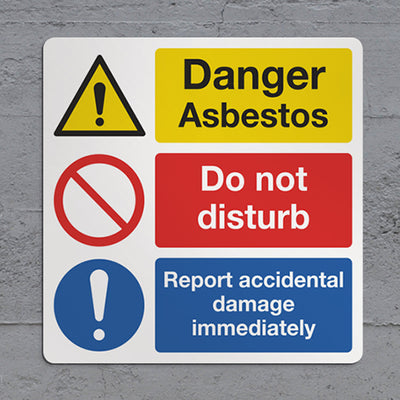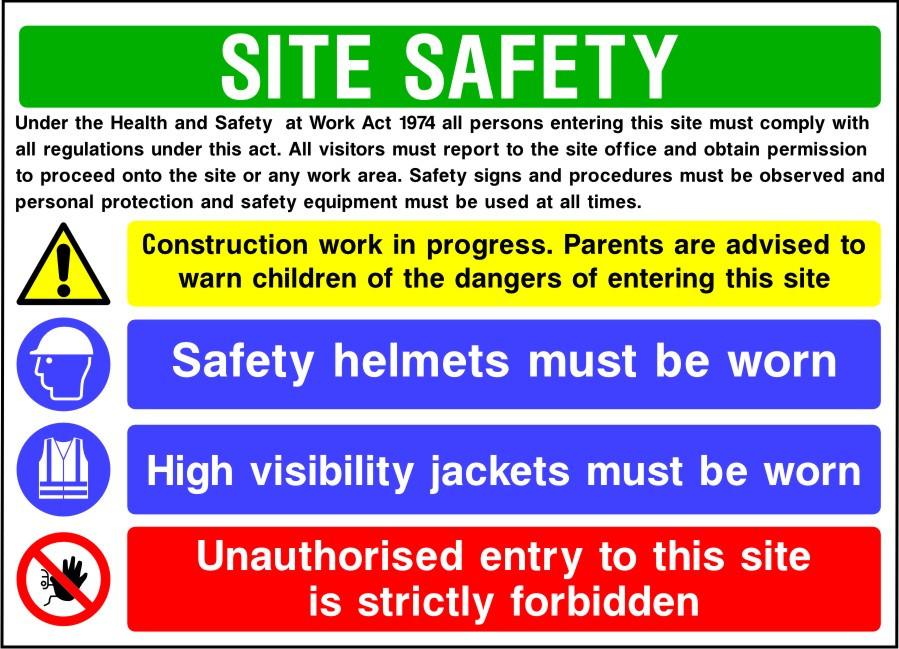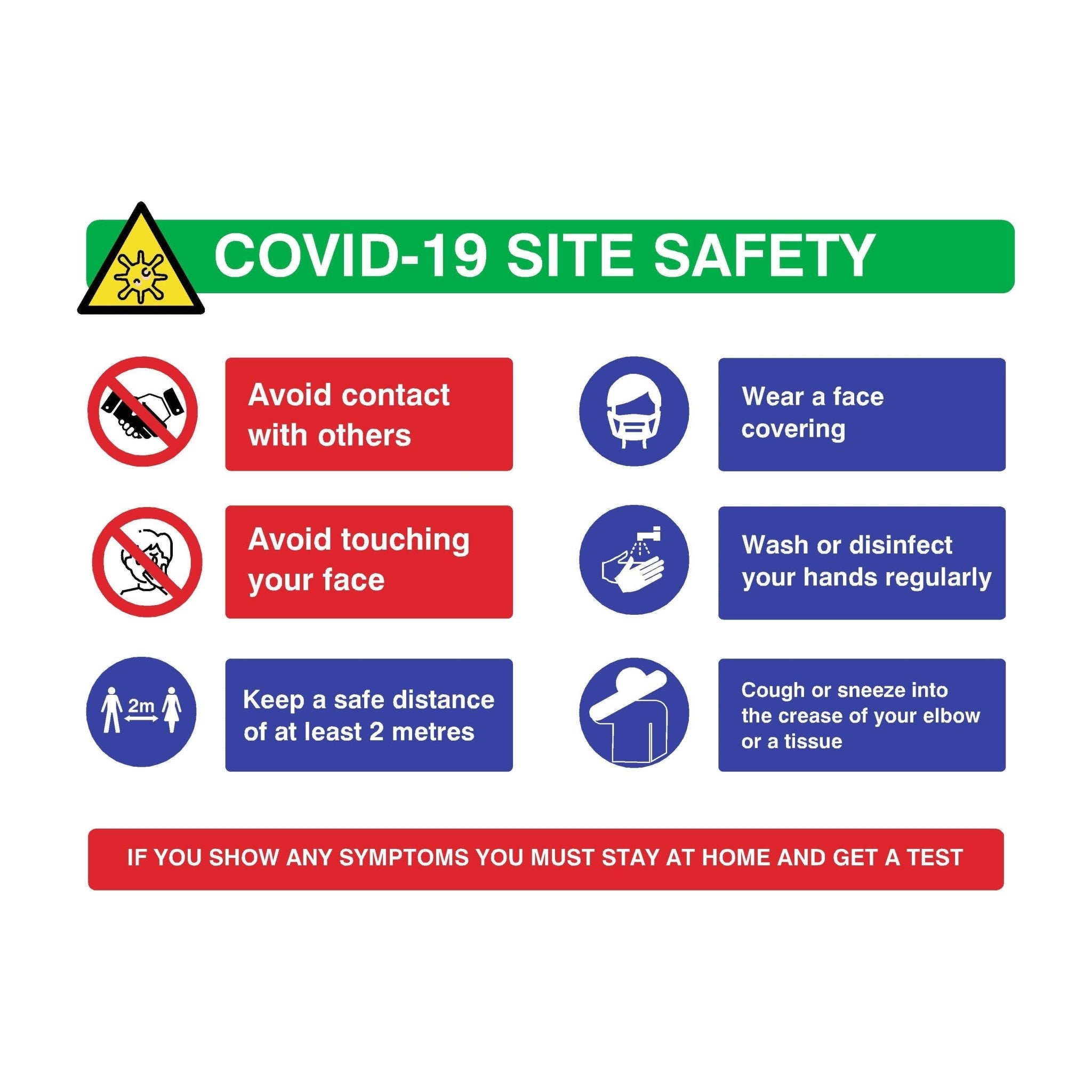Sorts Of Safety And Security Indications You Required to Know for Ultimate Security

Indication
Indication play a vital role in making certain security by communicating essential information concerning possible risks. These indications are vital in different settings, consisting of offices, public areas, and highways, where they inform individuals to risks that may not be instantly noticeable. Usual instances of indication include those showing slippery surfaces, electric threats, and low above clearance.

It is necessary for companies to consistently evaluate the placement and presence of caution indications to guarantee they efficiently communicate threats. Educating staff members and the public on the definitions of these indications further enhances their relevance in advertising safety and security culture - Health and Safety Signs.
Restriction Signs
Restriction indicators function as vital indications made to communicate constraints and habits that need to be avoided in details locations. These signs are vital for guaranteeing security and conformity, assisting to prevent mishaps and minimize risks in different environments, including work environments, public areas, and building and construction websites. Frequently defined by a vibrant red circle with a diagonal line, prohibition indicators convey a clear message that specific actions are not allowed.
Typical examples consist of signs that prohibit smoking cigarettes, eating, or entrance right into limited areas. The efficiency of these indicators rests on their presence and simplicity, making it easy for people to comprehend the intended message at a glimpse. Correct placement is important; they should be found in high-traffic areas and near the points of potential infraction to maximize understanding.
Restriction signs not only safeguard individuals however likewise support legal demands and organizational plans (Safety Signs). Their usage cultivates a society of security and respect for laws, contributing to a safer setting for every person. Understanding and adhering to the directives of prohibition indicators is essential to guarantee compliance and advertise general security in any provided room.
Necessary Signs
Necessary indicators are necessary parts of safety and security communication, developed to educate individuals of actions that should be required basics to guarantee safety and conformity in various settings. These indicators are characterized by their distinctive blue history and white icons or message, sharing clear instructions that need to be followed.
Common examples of obligatory indicators consist of instructions such as "Put On Personal Safety Devices" (PPE), "Usage Hearing Defense," and "Should Clean Hands." Each of these signs offers a specific objective, targeting behaviors that improve safety and minimize dangers in offices, public facilities, and building websites.
The value of compulsory signs can not be overemphasized; they not only help in avoiding injuries and mishaps but also ensure adherence to organizational policies and lawful laws. In environments where dangers prevail, the presence of these indications strengthens a culture of security and liability among all people.
To optimize their performance, necessary signs must be positioned in visible locations, guaranteeing they are easily seen and recognized by every person around - Safety Signs. On a regular basis evaluating and preserving these indications is additionally vital to ensure their quality and exposure, thus promoting a more secure environment for all
Emergency Situation Information Indicators
Emergency situation info indications play a crucial role in directing individuals during dilemmas, supplying crucial info that can aid make certain safety and promote efficient action actions. These indications are made to deliver prompt and clear directions in emergency situation situations, such as fires, chemical spills, or all-natural disasters.
Usually, emergency information indicators consist of crucial information such as discharge routes, emergency get in touch with numbers, locations of emergency treatment stations, and directions for utilizing emergency equipment, such as fire extinguishers or defibrillators. Their style commonly includes bold colors, high contrast, and generally recognizable signs to guarantee presence and understanding also in high-stress scenarios.
It is essential for organizations to frequently review and update their emergency details signs to mirror any type of adjustments in structure formats, emergency Read More Here procedures, or get in touch with details. Appropriate positioning of these signs is similarly important; they need to be positioned in locations with high foot website top article traffic and at eye degree to guarantee that they are conveniently noticeable throughout emergencies.
Standard and Directional Indicators
Standard and directional indications are necessary tools for navigating within various settings, making certain that individuals can locate their way efficiently and securely. These indicators offer an essential feature in both exclusive and public spaces, including work environments, health centers, schools, and recreational areas.
Normally including arrows, symbols, or message, guideline and directional indications give clear guidelines on navigating intricate layouts. They assist protect against confusion and lessen the danger of mishaps by directing people towards leaves, toilets, and details sights. Efficient signage is designed to be quickly well-known, frequently utilizing standardized shades and forms to communicate info swiftly.
In addition to assisting navigating, these signs play an important role in emergency situation preparedness. During situations, well-placed directional signs can lead individuals to security, decreasing panic and ensuring orderly emptyings. Routine upkeep and updates to these indications are essential, as altering layouts or new threats may require revised support.
Conclusion

Understanding the distinctions in between caution signs, prohibition indicators, obligatory signs, and emergency situation info signs can substantially improve total safety awareness.Caution indications play an important function in making sure security by conveying crucial info regarding possible threats. These indications are crucial for ensuring safety and conformity, assisting to prevent accidents and mitigate dangers in different settings, including work environments, public locations, and construction sites. Throughout dilemmas, well-placed directional indicators can lead people to safety, lowering panic and making certain orderly emptyings. Caution indicators, restriction indicators, necessary indicators, and emergency info and directional indicators each serve distinctive functions in conveying essential details relating to risks, constraints, safety activities, and navigational support.